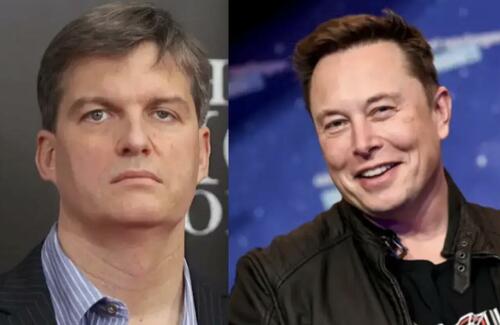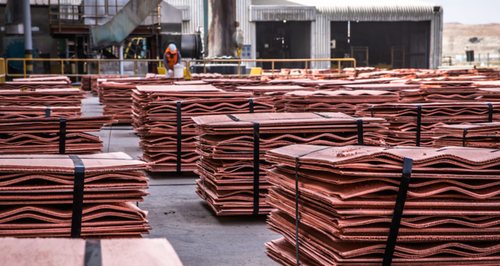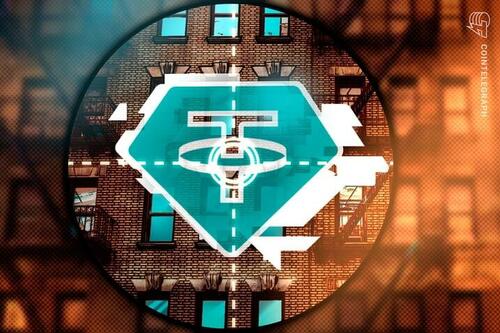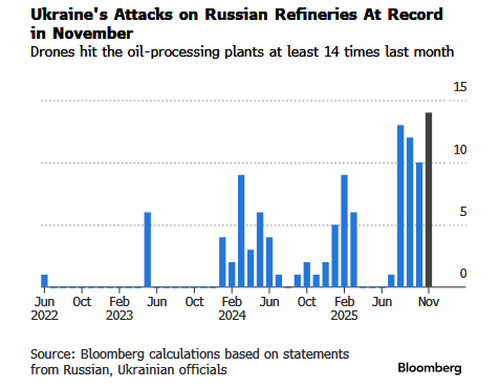The transcript from this week’s MiB: A. Lange & Söhne CEO Wilhelm Schmid, is below.
You can stream and download our full conversation, including any podcast extras, on Apple Podcasts, Spotify, YouTube, and Bloomberg. All of our earlier podcasts on your favorite pod hosts can be found here.
~~~
Barry Ritholtz: This week on an extra special live edition of Masters in Business, I’m at the Audra Newport Concourse de Elegance, and my conversation is with Wilhelm Schmidt. He is the CEO of Ang Zona, one of the finest watch companies in the world. They’re located in Glashutte, Germany.
Our conversation talked about everything from collectible timepieces to collectible cars. I found it fascinating, and I think you will also, with no further ado, my discussion with Alan’s owners, Wilhelm Schmidt. Wilhelm Schmidt, welcome to Bloomberg
Wilhelm Schmid: Thank you so much, Barry. Thank you.
Barry Ritholtz: Thank you so much for this, for hosting this event and, and participating in our conversation. I have, I have so many things to talk to you about, but I have to start with this prestigious concourse in this spectacular setting on what could be the nicest day of the year. What is the connection between classic cars and fine mechanical time pieces?
Wilhelm Schmid: Some mean people say me because I like cars and watches and watches and cars, but I think it’s of course more than that. You know, watchmaking is, that’s what we emphasize on and 90% of our energy will go into watchmaking. That, that’s, that’s, that’s our home turf. But I believe as a global brand, you also need to find a world that is focused on something else, but where you have sort of a common ground that you can walk on.
And about 14 years ago, we were looking for a platform where we can show the brand and where we can bring customers to entertain. And if you look at these cars, let’s start with the cars and, and look at the word concourse of elegance. So we are not in vintage cars or racing, it’s about concourse of elegance. You know, it’s about beauty, it’s about heritage, it’s about craftsmanship, it’s about design. And if you look onto the pillars on which our brand rests, it is exactly, it’s it’s history, heritage, it’s design, and it’s of course the craftsmanship. And trust me, these cars that you see here, as they were built, they were built by proper craftsmen. And even today, without proper craftsman, you will not keep them on the road.
Barry Ritholtz: I know that you studied as an engineer and mechanic before eventually moving over to, to watches, obviously the design ethos of some of these cars. Yeah. They’re just so phenomenal and spectacular. What sort of inspiration do you running a, a fine watchmaker take from the designs of these cars?
Wilhelm Schmid: I don’t think you can immediately take something from that world into our world, but if you look at these cars, well, the first thing that comes to mind is some of them are 50, 60, 80, a hundred years old. And we look at them today and they still fascinate us. So obviously that design survived all the different fashion change of taste, odds of time. They’re here today and they’re as attracted as they were probably back then when they were brand new.
If you look at specifically the purpose-built car, you know, the race cars, they were built for only one purpose and that’s what they were perfect in. And I think in watches you also have to identify what is it that you emphasize on, and then don’t compromise too much on it because if you start making big compromises, you end up with something which is, you know, a little bit of everything, but nothing particularly really good. So I think that’s what you can take from cars into watches, identify the purpose, and then everything should direct to achieve that. If I call it the North Star, you know that purpose and for watches, it’s exactly the same. So
Barry Ritholtz: There’s a lovely white Mercedes going out there. (Yes. With the red interior.) And I once heard someone ask you to compare A Lange to a car, and you thought about it and said the gull wing, because the design was purposeful from start to finish. Tell us what you mean by purposeful in either watch or car design.
Wilhelm Schmid: You know, if you, if you go back and think about the mid fifties in Germany, I mean, I wasn’t born there. I’m not that old, but you know, I can, I see, I saw pictures, I saw pictures of the Autobar and I saw the cars on the road back then. And then think about very suddenly something like the gold wing appears. I mean, an alien could have landed and caused the same result.
Barry Ritholtz: Tubular frame up racing an,
Wilhelm Schmid: d 210 horsepower you know, the 235 kilometers an hour high speed. You know what it did, the doors.
Barry Ritholtz: ’cause you couldn’t have a door over that frame exactly for the body, they were too wide.
Wilhelm Schmid: Right. So they just came up with the doors and you know what they did at limit? They wanted to permit that because in the book it, it didn’t say explicitly, it’s not allowed, but, you know, no got much Negotiated.
Barry Ritholtz: And they did very well,
Wilhelm Schmid: Absolutely they did. Absolutely did it. No, but I think the car was made for one purpose and it was winning races in the first place and, and, and paving the way for Mercedes internationally to be back where they wanted to be. And that is very high up. Don’t forget the price of these cars. I mean, you could probably bought streets for the same price, not houses or streets in, in, in the mid fifties ar
Barry Ritholtz: Arguably the first supercar ever made. So you’re a connoisseur of vintage cars. I know you have a couple of Porsches. Tell us what else you like in, in classic automobiles?
Wilhelm Schmid: I do like the, what I call the odd balls. The Porsche that I have are actually the exceptions because everybody knows what a nine 11 is. And probably many people know what a 356 is. So that’s, I don’t say utility, but these cars are, you know, the, the, the 356 is my Swiss pocket knife. Because you know, you can go on a tour with it, which I take that car a lot and if the weather is nice, you just open the roof and it takes you 30 seconds and if the rain comes, it takes you 30 seconds to bring the roof back on. It is not as watertight as you think it is. I have to say. There’s still a lot of water coming through, but at least you’re roughly protected against the environment.
And the 911 is the car that I never wanted and I will never sell. It’s just a fantastic driving car. But you know, the other cars that I have are more for people that really know about cars. You know, if I share somebody, I have a Fraser Nash, most people right. Wouldn’t even know what that is. And that’s not a surprise because I think they build about 600 cars pre-war and then about 83 post-war. So the likelihood that you know it, if you’re not into the hobby is very high.
Barry Ritholtz: So I keep me meeting people here, chatting about cars, chatting about watches. When I was doing a little research on you, it turns out that you really know the firm’s clients, both customers and collectors. What do you do in an event like this? How much time do you spend with some of the longer collectors and people who are so enthusiastic about the brand?
Wilhelm Schmid: I would say 90%. You know, really, if I’m not in interviews with you, then I’m out there and, and, and talking to our customers, you know, that’s the most important for us because at the end we mustn’t forget all that is not paid by Lang and Zuna. This is paid by our customers.
Barry Ritholtz: there’s a quote of yours I really enjoyed. We wanna surprise, inspire and enchant our clients with an unprecedented imagination and ingenuity. How do you go from those lofty goals to turning it into a mechanical time piece?
Wilhelm Schmid: Yeah, well first of all, it takes strict discipline. The moment you do things that are not in line with who you are, you may surprise people, but probably not positively. And, and for sure eventually will dilute your, your your brand equity. So the third thing is you have to apply this simply. That’s why we have six different watch families and we have sort of a horizon of seven years and we wanna apply each watch family at least once, let’s say within 24 months rolling. So that’s, you know, sort of the, the engineering structure all attempts. That doesn’t answer your question. I know staying traditional, but thinking out of the box because our value set is very traditional, but our thinking is often very much out of the box.
I give you a good example. The torubillion has been invented by Breguet, I think about 280 years back or so, something like this. It was there to enhance the accuracy of a watch by, you know, eliminating the mistake that happened through gravity, basically
Barry Ritholtz: Mostly pocket watches, which we’re always facing downwards,
Wilhelm Schmid: and of course it’s a very delicate mechanism. It it does do the job because think about you put your watch on desk next to your bed, so at least for 10 hours it is exposed to gravity without moving. Anyhow, I wanna argue the necessity of a ion. What we found very interesting is that it was there to enhance the accuracy, but it was impossible to set time correctly. Because if you do that with a running second, it is pure luck that you hit exactly the point. So we were the first in 2009 to come up with a mechanism that makes the toon stop. So the second hand comes to a stop and you can adjust the time properly. We then went one step further with the 1815 tobe beyond where you’re not only stopped the moment you pull the crown, that second then goes to zero, which is the best way to adjust your watch properly.
Now that sounds easy, but if you take into consideration that that tour beyond has about 85 little parts, the total weight is about oh 0.75 gram wow. You, you know, any impact and the mechanism will be destroyed. So you have to be very careful in what you do. That is just one example where we think out of the box, a chronograph with sort of a, a running minute, which most of them do, you know, the second hand goes and it’s catching the, the minute counter. And then as, as the second hand goes on, the minute counter slowly moves, which makes it quite difficult. Is it now two minutes or three minutes or four minutes. So hours in most cases have the jumping. So it’s the second hand crosses the 12th, it jumps by one minute. So you absolutely clear it’s one minute, two minute, three minute or four minute, not is it two and a half or is it three? Just little things that don’t mean a lot for people that are not into fine watches, but they mean the world for our customers.
Barry Ritholtz: I want to talk about the Odysseus in a little bit. Yes. And that particular chronograph, which is fairly unique, but we’re, we’re not quite there yet. I wanna stay with the fact that Longa is famously a German watchmaker. What advantages are there or disadvantages Yeah. For being a German maker in an industry dominated by giant Swiss brands?
Wilhelm Schmid: I think it’s more an advantage than a disadvantage. First of all, I always say there is no Swiss watchmaking and there’s no German watchmaking. Because think about it. I mean, you can find Swiss made watches for a hundred euro and then you find, find the same for a few million. How, how, how can, how can be there any common denominator that covers the Swiss mate from there to there. So same for Germany. You know, we have watches that are very inexpensive and then you have us with sometimes watches up to 2 million obviously at the, at the top end. It’s like a package, it’s like a box of chocolate, you know. And our chocolate is craftsmanship, history and design. And we stay very strict to it.
00:13:00 [Speaker Changed] So some of the bigger brands put out watches in the millions of units. Rolex famously two to 3 million. Patek is known to do about 75,000 watches. Longa does a small fraction. Every piece is made by hand assembled twice.
Barry Ritholtz: And not because we can’t get it right first time — its assembled first and then the pieces are taken apart and hand engraved and decorated.
Wilhelm Schmid: It’s you know, because we use the original sources, we believe that anything that nothing is much better than, than German silver. You know, that’s the perfect material. It’s been, it’s been good for the last 150 years. So we believe in this and we don’t want to coat it. Which means over time it will develop a very nice patina, you know, the silver will get that little golden glow, which is beautiful.
Problem is you breathe on it or you touch it, it will look very ugly very soon. And you cannot even clean it. You have to machine it. So that means to, to, to to, to maintain a statical and technical perfection, you first have to make sure your movement is absolutely up to scratch. All tolerances are there, everything is adjusted, everything works.
You go through the test and if you have assurance, you know, that movement is like, it has to be, it goes back to the watchmaker. He or she will disassemble it, clean it, put in the final decoration because now you know you don’t have to adjust anymore because that’s done. You clean it, you oil it, you put the final decoration in case it goes again through the test, and only then it ends up in a, on a, on a happy wrist.
Barry Ritholtz: So inherently the way you build watches, you’re gonna be somewhat limited in production. How, how does that affect the decision making process of what sort of watches you make? And I know there are a number of Longo watches that are limited editions of a hundred or 50 or even 25. Yes. What’s the thinking behind that?
Wilhelm Schmid: Very easy. You know, sometimes let’s take the minute repeater perpetual calendar that we launched this year in April. We know it’s gonna take us three to four years to build to 50 watches.
Barry Ritholtz: Meaning from start to finish you’ll do a couple of watches every year wow
Wilhelm Schmid: You know, so, and we know that. So in today’s world to come up now with this sort of capacity and say we produce a hundred means the last one will get to watch in eight years.
Barry Ritholtz: That’s a long time
Wilhelm Schmid: Right. So what that’s, you know, capacity balanced by what we think we can expect from a customer to wait, that usually gives an idea about the limitation.
Barry Ritholtz: I was looking at the Lange Perpetual In black. Yes. And I stopped by the boutique and they said figure somewhere between 12 and 15 months. Before yours is ready. So when someone orders a watch. That goes into the system and my watch is moving. Yeah. it’s literally that specific
The Odysseus came out very unique looking sports watch then a lightweight titanium version.
Wilhelm Schmid: No, first the white gold. White gold. So it was 24th of October 19 stainless steel in April, 2020. White gold, then titanium,
Barry Ritholtz: Then the honey gold,
Wilhelm Schmid: Then the honey gold. No then the odys chronograph.
Barry Ritholtz: Ah The chronograph
Wilhelm Schmid: And then the honey gold.
Barry Ritholtz: So I, let’s talk about the chronograph. Most people are familiar with Chronos ’cause they typically have two or three sub dials. YesNot with the Odysseus
Wilhelm Schmid: Now it wouldn’t work because of the design of the dial. You know, if you look at
Barry Ritholtz: ’cause of the big day and date?
Wilhelm Schmid: If you take the dial off and you look at the movement, the upside of the movement, you will see it’s almost all blocked. So there is no way that you come through. And of course we also didn’t want to increase the size by much, you know, we wanna have a wearable watch. So the only way was to utilize the center even more than we usually do. And that’s why the chronograph, the second and the minute hand comes out of the center.
Barry Ritholtz: And when you reset the chronograph, it does a little bit of a dance. Yeah. That’s kind of unusual. I’ve spoken to a lot of people about this. Nobody has been able to explain that to me. You are my last hope. Tell us about that.
Wilhelm Schmid: It’s very easy because they are yet together. So if you reset it, the, the minute hand will do as many turns as the second because it’s linked. Right. And it’s so quick that you can’t see. It probably would take a good camera and then you slow it down to see it. But basically, if you have stopped 17 minutes and let’s say 30 seconds, what works? Like this is factually seven times going around to come to zero.
Barry Ritholtz: Why does it, why does it do that?
Wilhelm Schmid: Because it’s geared together. It’s, there’s, you know, because it comes out of the,
00:19:05 [Speaker Changed] It’s strictly because of it’s a centen center hands. I think that’s
00:19:07 [Speaker Changed] Exactly the point.
00:19:08 [Speaker Changed] Huh. That, that’s really, that’s really fascinating. So a watch like the Zet work or the Odysseus, how long is that process when someone first conceives of this, take us through how long it is from idea till the finished product in the boutique.
00:19:24 [Speaker Changed] Very different. You know, Odysseus, as I said, took us 25 years. Basically. I think that the real process where we identify, that’s the phase, you know, that looks different to anything else in the market that will not cannibalize anything within our own range. To to to, to launch, to watch it. The 24th of October, in, in, in, in 2019. I was good. Seven years,
00:19:53 [Speaker Changed] Seven years from start to finish. That’s, that’s amazing. Yeah. So, so yesterday at the event two new longest dropped the Axia thin. Yes. In black Onyx and platinum. Is that
00:20:05 [Speaker Changed] Right? Yes. True. Onyx honey, gold and platinum. Yeah.
00:20:08 [Speaker Changed] Really striking dress watches. The Saxon are sort of, I don’t wanna call it entry level, but they’re less pricey than some of the other watches.
00:20:19 [Speaker Changed] They are more simple, simple. That’s how I show it, you know, it’s, for us, it’s all about the amount of parts the years it take to develop the, the hours it takes to assemble that at the end will define whether it’s a complicated watch or I would say more simple watch and two hands. I think we don’t go more simple than two hands.
00:20:40 [Speaker Changed] And my first nice dress watch was a rose gold Saxon mood phase, you see over black. Yes. And one of the things that people are genuinely surprised is the same level of detail and finishing what, what you describe as simple a lot of people think of in terms of price point. There seems to be no difference. No, no, no. It’s,
00:21:03 [Speaker Changed] You know, if you look at our, our process in the manufacturing, we can, you know, the people that work on finish, they sometimes have no idea where that part will end up. So they will not say, oh, that goes into grand complication. We do it a little better. Or that goes into thin. How we do it a little, that’s
00:21:22 [Speaker Changed] The same thing regardless. Million dollars or entry level.
00:21:25 [Speaker Changed] It, we do not distinguish in quality at all. It’s all the same emphasized on lofty detail, craftsmanship, hand polishing, decoration, hand engraving. There is no difference. Double assembly, it’s one process. It doesn’t matter whether the watch would cost 25,000 euro or 2 million.
00:21:47 [Speaker Changed] And when people say to me, I’m looking for an elegant dress watch, but something that’s not too pricey. My answer is always the Saxon, it’s just timeless, so elegant and continues to just, yes, the design gets better over time.
00:22:03 [Speaker Changed] And, and it’s, it’s, it’s ama you know, people, you look at it and you see it’s an Alan on Zuna watch. If you have something complicated like this, you have a lot of hands to work with. You have the sub dials, you know, you have to push back. You can do a lot. But I think one of the biggest challenge for designers is you have two hands to work with and not a lot on the on the dial. Make it an Alan Zuna.
00:22:28 [Speaker Changed] So the data graph has been called one of the best chronographs ever designed. What’s the core of that Watches appeal? What makes that so special?
00:22:39 [Speaker Changed] I think it’s, it’s, it’s, it’s more than just a watch. You know, I, I’m a watch collector for a long, long time. I can remember when I opened a newspaper in, in, in, in, in 20, in, in 94. And I saw the at with the four lunga watches. 99 were, most companies around the world were still using somebody else movement and often the same supplier. Here comes a chronograph, which is one of the crown things in watchmaking from Germany in a very unique design with an outsized date. I think it was a wake up call. And, and, and we must not estimate what that watch started in the watch industry because before that chronograph didn’t play a role. There were two supplier and that was it basically after that. And if you then go and, and, and, and analyze what happened from then to the following 5, 6, 7 years, a lot of chronograph movements came out. So that’s why this watch is so important for us because that was the first real complication other than the tobe beyond polymer that we worked on. And I think that was a wake up call and it, it, it just gave us a reputation as a solid watchmaker that it’s the next level up
00:24:20 [Speaker Changed] For sure. Absolutely. The next level up. So you get to spend a lot of time with, with clients, with customers. Absolutely. With collectors. How are you seeing the, their expectations and desires changing? What does the client base look for from Longo over the next decade? I think it
00:24:38 [Speaker Changed] Does. It never changed.
00:24:40 [Speaker Changed] Never
00:24:41 [Speaker Changed] Changes. No, you know, first of all, do you have any idea what you will like in three years from now, one
00:24:50 [Speaker Changed] Who does?
00:24:50 [Speaker Changed] Exactly. So when people say, oh, you come with a small watch because you follow trend, I say, look, I mean, I wish we had known seven years ago and we started developing the movement. We are not in the fashion industry. Business, you know, our processes and the time it takes to come to market is so long that you maybe can anticipate, but maybe you have to stay true to yourself. And I think the one thing which our customers expect from us is authenticity. It has to be in Lan Zuna. And if you had followed the discussion after we launched the Odysseus, because you know, we always said, we only precious metal in here, can we steal? And later on with titanium, say, of course there was a heated debate. Of course there was. And we were aware of it because that is a tension that on purpose we wanted, there were a lot of people that said, ah, it’s not for me. I see Langa as dress watch only there were luckily a lot more people that say, I want that watch desperately where we can produce fine. However, it just opened up a new chapter in our design language because now we have a playground to try out things that we would never do with our classical watch families.
00:26:19 [Speaker Changed] And every car enthusiast knows when the Porsche nine 11 came out, the 3 56 purists were upset. What, what are you giving us such a big car who needs six cylinders?
00:26:32 [Speaker Changed] Absolutely. That’s why they built a nine 12. Right. Put the four cylinder in. You know, that’s, that’s exactly what they did. So yeah. That’s funny. Sometimes I
00:26:41 [Speaker Changed] I I love this quote of yours and I’m wondering if it still applies. You said part of longer’s success is that we’re a secret. Yeah. So question number one is what makes that an asset? And question number two is look at this event. How much longer is this a secret? Oh,
00:26:58 [Speaker Changed] It is, it is, it is in the white world. We are still absolutely unknown and I think that’s a good place to be. There are, there are three reasons to it. The one is, what we do is very difficult to understand specifically at the price point that we request for people that are not into fine watchmaking. Why would you spend so much money on a watch when your iPhone gives you the time? More precisely. You know, that the general thinking for sure. The second is, in today’s world, you don’t want to show off too much. At
00:27:40 [Speaker Changed] Least these are very much under the radar. And I am always shocked at people who haven’t the slightest idea when I’m wearing this, as opposed to the better known
00:27:49 [Speaker Changed] Brands. Why isn’t that nice? I mean, that gives you a certain confidence and a certain, it’s, it’s, you know, you don’t need to shout. And on the other hand, and I’m sure you can agree on it, if you see somebody that is also having a una it’s not difficult to, to get the communication started. Isn’t it
00:28:08 [Speaker Changed] Immediate, immediately have something to shout about if you know, you know,
00:28:12 [Speaker Changed] You know for sure. And, and that’s why I believe it is so important to remain a secret. I also admit the real challenges to secret, to share the secret with, you know, the right crowd of people. Because at the end, you know, I mean I’m fine, but whenever we take the new apprenticeship trainees in in August, I feel the duty on my shoulders because now they start a career as watchmaker and they’re in for the next 40 years. So we need to make sure that the next generation knows what we do and we stay relevant for this.
00:28:46 [Speaker Changed] So I only have you for a few more minutes. I want to get to my last couple of questions. Speaking of the next generation. Yeah. How do you appeal to younger buyers and and what sort of approach do you have as all these tastes seem to shift amongst the 20 and 30 something crowd?
00:29:07 [Speaker Changed] Yeah, I gladly we don’t have a real issue here. We have a surprisingly young customer base. I always say that and I never understood it. I mean, if you are young and you’re interested, what speaks against quality, longevity, classless and timeless design. Robustness, value creation. Yeah. I mean, it doesn’t matter whether you are a hundred years old or 10. If you are into that, you’re gonna like it. The way we connect with these people is different to the way, let’s say I was connected to the watch industry because, and as, as I grew up, it was very difficult to find even specialized magazines for, for watches. Today you have everything you can think of. I believe we live in absolute paradise times for for watch enthusiast because never ever in history have there been more watch brands, higher quality, more information, right. More information and easy accessible information. You know, you can do your research without leaving your room. That was impossible in times, you know, where I started to get into the hobby,
00:30:21 [Speaker Changed] Although I, I would tell people go see the watch. Go try it on, make sure that’s
00:30:26 [Speaker Changed] The only thing that matters. That’s right. It’s the only, I would just say the natural habitat of a wrist watch is, is the wrist a wrist? So forget about looking at thumbing and ah, I like it. That’s a good start. But the moment of truth is you grab that watch, you put it around your wrist, you look at yourself and see is it me or is it not?
00:30:46 [Speaker Changed] So how do you have access to every longer watch? Yeah, there is. How do you decide what you’re gonna grab that day to wear? I,
00:30:54 [Speaker Changed] You know, this one because of, you know, chronograph, we’re in a car world. It’s the 1815, so that’s the more classical line. I’m a huge fan of chronographs and it doesn’t get any better than a Chronograph Raton. So you know that. And I, it’s admit, I think it works very nice with my tan color right now.
00:31:17 [Speaker Changed] So our last question. Tell us what’s next for Longa and Sona? What surprises are coming up down the road? What should we be looking for?
00:31:27 [Speaker Changed] I think it’s always good to look for, but if I now share secrets, there’s no surprise. And that’s the one thing people love surprises. But I can share with you as much as is, this is not the last surprise for this year.
00:31:44 [Speaker Changed] Oh, really? So the, the Saxon Finns not the last surprise of 2025. That’s
00:31:50 [Speaker Changed] What I should
00:31:50 [Speaker Changed] Fantastic. That was my conversation with Wilhelm Schmidt, CEO of Langan Zona at the Newport Oring concourse to Elegance. Extra special thanks to the team that came up to Newport to help film this. Alexis Noriega is my video producer. Sebastian Escobar is my videographer. Anna Luke is my producer. Sage Bauman is the head of podcast at Bloomberg. I’m Barry ols. You’ve been listening to Masters in Business on Bloomberg Radio.
~~~
The post Transcript: Wilhelm Schmid, A. Lange & Söhne CEO appeared first on The Big Picture.



 Japan and Chinese coast guard vessels have clashed somewhat frequently in the recent past. Illustrative: Kyodo News, via Associated Press
Japan and Chinese coast guard vessels have clashed somewhat frequently in the recent past. Illustrative: Kyodo News, via Associated Press Source: VOA
Source: VOA












Recent comments